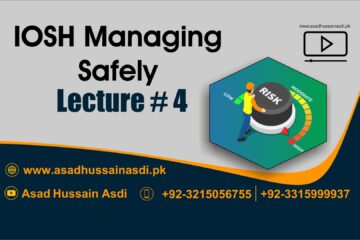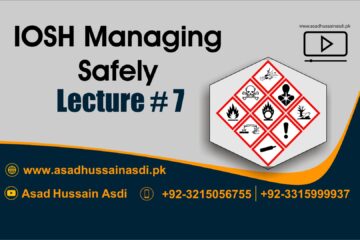ProQual Level 5 Diploma in Utility Mapping and Surveying Qualification Specification Course in Islamabad || Registration Open
Registration Open= +92-3315999937, +92- 3215056755 (WhatsApp Only)
Introduction
The Level 5 Diploma in Utility Mapping and Surveying is aimed at those working in a
surveyor role, and covers topics relating to planning site surveying operations; forming and
working with project teams; using surveying instruments; establishing and maintaining
dimensional control; working with technical systems; assessing and producing mapping
data.
The qualification units cover provision of surveys, meeting some of the requirements of
planning, managing and delivering a PAS128 Survey at Quality Level B (M1-M4).
The awarding body for this qualification is ProQual Awarding Body and the regulatory body
is the Office of Qualifications and Examinations Regulation (Ofqual). The specification for
these qualifications has been approved by the Welsh Government for use by centres in
Wales and by the Council for the Curriculum Examinations and Assessment (CCEA) for use
by centres in Northern Ireland.
This qualification has been accredited onto the Regulated Qualifications Framework (RQF),
and is a pre-requisite for progression to the ProQual Level 6 Diploma in Utility Mapping and
Surveying qualification.
Qualification Profile
Level 5 Diploma in Utility Mapping and Surveying
Qualification title ProQual Level 5 Diploma in Utility Mapping and
Surveying
Ofqual qualification number 600/5171/1
Level Level 5
Total qualification time 450 hours
Guided learning hours 300
Assessment
Pass or fail
Internally assessed and verified by centre staff
External quality assurance by ProQual verifiers
Qualification start date 1/5/12
Qualification end date
October 2017 4
Level 5 Diploma in Utility Mapping and Surveying
Entry Requirements
ProQual Level 3 Certificate in Utility Mapping and Surveying is a pre-requisite for
candidates undertaking this qualification.
Centres should carry out an initial assessment of candidate skills and knowledge to identify
any gaps and help plan the assessment.
Qualification Structure
Candidates must completing 6 Mandatory units.
Mandatory Units
Unit Reference
Number Unit Title Unit
Level
Y/507/1370 Agree project requirements and plan site surveying in geomatics and
site surveying management 6
D/507/1371 Plan methods, resources and systems to meet project requirements in
geomatics and site surveying management 5
H/507/1372 Site surveying procedures for construction and the built environment 4
K/507/1373 Establish and maintain the dimensional control and setting out of
construction projects in geomatics and site surveying 4
M/507/1374 Establish and operate technical information systems in geomatics and
site surveying management 5
T/507/1375 Identify, assess and present spatial data in geomatics and site
surveying management 6
October 2017 5
Level 5 Diploma in Utility Mapping and Surveying
Centre Requirements
Centres must be approved to offer this qualification. If your centre is not approved please
complete and submit form ProQual Additional Qualification Approval Application.
Staff
Staff delivering this qualification must be appropriately qualified and/or occupationally
competent.
Assessors/Internal Quality Assurance
For each competence-based unit centres must be able to provide at least one assessor and
one internal quality assurance verifier who are suitably qualified for the specific
occupational area. Assessors and internal quality assurance verifiers for competence-based
units or qualifications will normally need to hold appropriate assessor or quality assurance
verifier qualifications, such as:
- Award in Assessing Competence in the Work Environment
- Award in Assessing Vocationally Related Achievement
- Certificate in Assessing Vocational Achievement
- Award in the Internal Quality Assurance of Assessment Processes and Practices
- Certificate in Leading the Internal Quality Assurance of Assessment Processes and
Practices
Support for Candidates
Materials produced by centres to support candidates should:
- enable them to track their achievements as they progress through the learning
outcomes and assessment criteria;
- provide information on where ProQual’s policies and procedures can be viewed;
- provide a means of enabling Internal and External Quality Assurance staff to
authenticate evidence
October 2017 6
Level 5 Diploma in Utility Mapping and Surveying
Assessment
Candidates must demonstrate the level of knowledge and competence described in the
units.
Each candidate is required to produce evidence which demonstrates their achievement of
all of the learning outcomes and assessment criteria for each unit.
Evidence can include: – assignments/projects/reports
– worksheets
– portfolio of evidence
– record of oral and/or written questioning
– candidate test papers
Learning outcomes set out what a candidate is expected to know, understand or be able to
do.
Assessment criteria specify the standard a candidate must meet to show the learning
outcome has been achieved.
Learning outcomes and assessment criteria for this qualification can be found from page 9
onwards.
Internal Quality Assurance
An internal quality assurance verifier confirms that assessment decisions made in centres
are made by competent and qualified assessors, that they are the result of sound and fair
assessment practice and that they are recorded accurately and appropriately.
Adjustments to Assessment
Adjustments to standard assessment arrangements are made on the individual needs of
candidates. ProQual’s Reasonable Adjustments Policy and Special Consideration Policy sets
out the steps to follow when implementing reasonable adjustments and special
considerations and the service that ProQual provides for some of these arrangements.
Centres should contact ProQual for further information or queries about the contents of the
policy.
October 2017 7
Level 5 Diploma in Utility Mapping and Surveying
Results Enquiries and Appeals
All enquiries relating to assessment or other decisions should be dealt with by centres, with
reference to ProQual’s Enquiries and Appeals Procedures.
Certification
Candidates who achieve the requirements for qualifications will be awarded:
- A certificate listing all units achieved, and
- A certificate giving the full qualification title –
ProQual Level 5 Diploma in Utility Mapping and Surveying
Claiming certificates
Centres may claim certificates for candidates who have been registered with ProQual and
who have successfully achieved the requirements for a qualification. All certificates will be
issued to the centre for successful candidates.
Unit certificates
If a candidate does not achieve all of the units required for a qualification, the centre may
claim a unit certificate for the candidate which will list all of the units achieved.
Replacement certificates
If a replacement certificate is required a request must be made to ProQual in writing.
Replacement certificates are labelled as such and are only provided when the claim has
been authenticated. Refer to the Fee Schedule for details of charges for replacement
certificates.
October 2017 8
Level 5 Diploma in Utility Mapping and Surveying
Learning Outcomes and Assessment Criteria
Unit Y/507/1370
Agree project requirements and plan site surveying in geomatics
and site surveying management
This unit covers the key responsibilities for understanding client and project requirements
and for planning site surveying accordingly, as well as maintaining and developing his/her
skills. It is about understanding and communicating project and client requirements. It is
also concerned with the planning for site surveying, including obtaining any advice and
permissions needed.
This covers provision of surveys, meeting some of the requirements of planning and
managing a PAS128 Survey at Quality Level B (M1-M4). It does not cover post processing of
GPR data.
Learning Outcome – The learner
will: Assessment Criterion – The learner can:
1 Be able to identify, assess and
agree project requirements for
site surveying
1.1 Identify and agree with the client what the goals and
priorities are, in terms of immediate requirements and
future site scope
1.2 Identify what data is needed, how accurate the data needs
to be, and what data outputs are required from site
surveying
1.3 Clarify the client’s requirements and the options available to
the client, and identify, inform and offer solutions to the
constraints and risks which might apply to the project
1.4 Analyse and assess how accurate, up-to-date and complete
the existing information is, and decide what additional
information is needed
1.5 Make a preliminary investigation to identify any access
problems and equipment which will be needed, and assess
the implications for site surveying
1.6 Summarise and present the project requirements and
client’s preferences to the client for comment
1.7 Explain the importance of timescales and the budgets
associated with the project
1.8 Justify any alterations in terms of timescale and resource to
decision makers which may enable successful project
completion
2 Understand how to identify,
assess and agree project
requirements for site surveying
2.1 Explain how to identify and agree with the client what their
goals and priorities are, in terms of immediate requirements
and future site scope
2.2 Describe how to identify what data is needed, how accurate
the data needs to be and what data outputs are required
from site surveying
October 2017 9
Level 5 Diploma in Utility Mapping and Surveying
Learning Outcome – The learner
will: Assessment Criterion – The learner can:
2.3 Explain how to clarify the client’s requirements, the options
available to the client, and identify, inform and offer
solutions to the constraints and risks which might apply to
the project
2.4 Examine how to analyse and assess how accurate, up-todate and complete the existing information is, and decide
what additional information is needed
2.5 Examine how to make a preliminary investigation to identify
any access problems and equipment which will be needed,
and assess the implications for site surveying
2.6 Explain how to summarise and present the project
requirements and client’s preferences to the client for
comment
2.7 Examine the importance of timescales and the budgets
associated with the project
2.8 Explain how to justify any alterations in terms of timescale
and resource to decision makers which may enable
successful project completion
3 Be able to plan site surveying
processes and operations
3.1 Explain the importance of working to site surveying method
statements related to any existing specification and a
programme of potential works
3.2 Assess any constraints which might affect the planning of
site surveying and limit the processes which are selected,
and make appropriate amendments if approved to do so
3.3 Communicate with decision makers where additional,
specialist site surveying, equipment or specialist operations
and information is needed
3.4 Obtain permission to carry out the site surveying from
owners of sites who will be affected and communicate with
decision makers if any legal authorities are to be notified
3.5 Identify the quality assurance and safety standards which
are to be implemented and are suitable for site surveying
4 Understand how to plan site
surveying processes and
operations
4.1 Propose how to deploy the agreed site surveying method
statement related to any existing specification and a
programme of potential works
4.2 Examine how to assess any constraints which might affect
the planning of site surveying and limit the processes which
are selected, and make appropriate amendments if
approved to do so
4.3 Explain how to communicate with decision makers where
additional, specialist site surveying equipment or
information is needed
4.4 Explain how to obtain permission to carry out the site
surveying from owners of sites who will be affected and
communicate with decision makers if any legal authorities
have to be notified
October 2017 10
Level 5 Diploma in Utility Mapping and Surveying
Learning Outcome – The learner
will: Assessment Criterion – The learner can:
4.5 Explain how to implement quality assurance and safety
standards which are suitable for site surveying
Assessment
Candidates must produce documentary evidence against each of the assessment criteria.
Where the work place evidence does not cover the whole range, knowledge evidence must
be provided to cover the remaining items of the range for each relevant assessment criteria.
October 2017 11
Level 5 Diploma in Utility Mapping and Surveying
Unit D/507/1371
Plan methods, resources and systems to meet project
requirements in geomatics and site surveying management
This unit covers the candidate’s competence in planning and coordinating site surveying
activities, including appointing project team members, addressing organisational and
communication needs, and producing appropriate documentation.
It is about planning work programmes and resources. It also concerns the appointment of
people. It is about understanding organisational and communication needs, and agreeing
and setting up systems to address those needs.
This covers provision of surveys, meeting some of the requirements of planning and
managing a PAS128 Survey at Quality Level B (M1-M4). It does not cover post processing of
GPR data.
Learning Outcome – The learner
will: Assessment Criterion – The learner can:
1 Be able to plan site surveying
activities and resources to
meet work requirements
1.1 Identify significant site surveying activities, evaluate the
resources provided against the information available about
the site, based on a typical Utility Mapping Survey undertaken
to existing specifications
1.2 Investigate alternatives if the resources needed are not
available such as hire, replacement and replenishment
1.3 Analyse planned site surveying activities against project
requirements and the potential effect of significant external
factors
1.4 Calculate how long each activity will take, identify activities
which influence each other and sequence them logically and
realistically so that they make the best use of the resources
available
1.5 Compare significant surveying activities against programme
and/or schedule of planned works which are consistent with
the project requirements
1.6 Evaluate alternations to the works programme which will
meet changed circumstances or offer cost and time benefits
1.7 Complete a post survey check list, show how it could be used
to improve future production and planning
2 Understand how to plan site
surveying activities and
resources to meet work
requirements
2.1 Describe how to identify significant site surveying activities,
evaluate the resources provided against the information
available about the site, based on a typical Utility Mapping
Survey undertaken to existing specifications
2.2 Examine how to investigate alternatives if the resources
needed are not available such as hire, replacement and
replenishment
October 2017 12
Level 5 Diploma in Utility Mapping and Surveying
Learning Outcome – The learner
will: Assessment Criterion – The learner can:
2.3 Examine how to analyse planned site surveying activities
against project requirements and the potential effect of
significant external factors
2.4 Explain how to calculate how long each activity will take,
identify activities which influence each other and sequence
them logically and realistically so that they make the best use
of the resources available
2.5 Explain how to compare significant surveying activities against
programme and/or schedule of planned works which are
consistent with the project requirements
2.6 Describe how to evaluate alternations to the works
programme which will meet changed circumstances or offer
cost and time benefits
2.7 Describe how to complete a post survey check list and how it
could be used to improve future production and planning
3 Be able to select and form a
project team
3.1 Identify if the people and services provided are sufficiently
skilled and equipped to meet the project requirements and
programme
3.2 Identify what the significant factors are which will affect the
availability of people, resources and outside services
3.3 Evaluate the quality, reliability and availability of the selected
services and resources
3.4 Agree potential changes to team membership and resources
with decision makers based on the factors identified which
are likely to produce an effective project team
4 Understand how to select and
form a project team
4.1 Describe how to identify if the people and services provided
are sufficiently skilled and equipped to meet the project
requirements and programme
4.2 Describe how to identify what the significant factors are
which will affect the availability of people, resources and
outside services
4.3 Explain how to evaluate the quality, reliability and availability
of the selected services and resources
4.4 Propose how to agree potential changes to team membership
and resources with decision makers based on the factors
identified which are likely to produce an effective project
team
5 Be able to agree and maintain
site surveying project
organisation and
communication systems
5.1 Identify what the organisational and communication needs
are for the project
5.2 Describe how to work to systems which are compatible with
those used by the client and which enable clear and effective
management, communication, administration and operational
controls
October 2017 13
Level 5 Diploma in Utility Mapping and Surveying
Learning Outcome – The learner
will: Assessment Criterion – The learner can:
5.3 Identify information about project team members’ roles and
responsibilities within the organisational structure, including
lines of communication in the event of an emergency, and
communicate this information to the people and
organisations involved
5.4 Agree methods of communicating, reporting, recording and
retrieving information which are appropriate to the needs of
the project and monitor the methods regularly for
effectiveness
5.5 Identify and investigate breakdowns in communication, and
take action to restore effective communication
5.6 Describe systems for recording and providing feedback on the
ways in which resources are allocated and used
6 Understand how to agree and
maintain site surveying project
organisation and
communication systems
6.1 Describe how to identify what the organisational and
communication needs are for the project
6.2 Examine how to work to systems which are compatible with
those used by the client and supply chain which enable clear
and effective management, communication, administration
and operational controls
6.3 Explain how to use information about project team members’
roles and responsibilities within the organisational structure,
including lines of communication in the event of an
emergency and how this can be made available to people and
organisations involved
6.4 Describe methods of communicating, reporting, recording and
retrieving information which are appropriate to the needs of
the project and monitor the methods regularly for
effectiveness
6.5 Describe how to identify and investigate breakdowns in
communication, and take action to restore effective
communication
6.6 Describe systems for recording and providing feedback on the
ways in which resources are allocated and used
Assessment
Candidates must produce documentary evidence against each of the assessment criteria.
Where the work place evidence does not cover the whole range, knowledge evidence must
be provided to cover the remaining items of the range for each relevant assessment criteria.
October 2017 14
Level 5 Diploma in Utility Mapping and Surveying
Unit H/507/1372
Site surveying procedures for construction and the built
environment
This unit is about the principles of site surveying, using survey instruments and computer
software in surveying.
This covers provision of surveys, meeting some of the requirements of delivering a PAS128
Survey at Quality Level B (M1-M4).
Learning Outcome – The learner will: Assessment Criterion – The learner can:
1 Understand and carry out technical
aspects of an Underground Utility
Mapping Survey to recognised
guidance and specifications
1.1 Describe the instrumentation required to carry out and
record an Underground Utility Mapping Survey,
including the uses and limitations
1.2 Explain the principles of electro-magnetic/radio
frequency location for the detection of buried utilities
1.3 Explain the principles and practice of Ground
Penetrating Radar and other geo-physical methods of
buried utilities detection and the identification of
anomalies
1.4 Describe the use of electronic measuring and recording
equipment used to collect data as part of a location
survey
1.5 Describe how to confirm the accurate positioning of the
survey control in terms of the geographical environment
and the survey area
2 Be able to use site utility surveying
instrumentation
2.1 Demonstrate the use and operation of the
instrumentation required to carry out and record an
Underground Utility Mapping Survey, including the uses
and limitations
2.2 Demonstrate the advantages and disadvantages of using
multiple Radio Location frequencies during buried
utilities detection and surveying, in accordance with a
relevant survey quality level and specification
2.3 Identify and position a gridded system to allow the use
of Ground Penetrating Radar or other geo-physical
methods for utility detection and the identification of
anomalies, in accordance with a relevant survey quality
level and specification
2.4 Record underground utility survey information
accurately and in accordance with a relevant survey
quality level and specification
2.5 Confirm the accurate positioning of the survey control in
terms of the geographical environment and the survey
area
October 2017 15
Level 5 Diploma in Utility Mapping and Surveying
Learning Outcome – The learner will: Assessment Criterion – The learner can:
2.6 Evaluate the use of GPS/GNSS within a site utility
mapping survey environment
3 Understand cartographic detailing
of underground utility mapping
works
3.1 Evaluate the benefits of computer software for the
transference of raw survey data from site and into the
desired drawing format
3.2 Evaluate the benefits of computer software to identify
and solve typical surveying problems
3.3 Explain how the raw survey information can be
incorporated into data taken from digital mapping
databases
3.4 Describe the advantages and disadvantages of obtaining
full topographical information about the site and how
this information can benefit the final survey output
3.5 Explain how to correct coordinate points within control
traverse networks
4 Understand the software available
for site surveying
4.1 Describe how site surveying software can determine the
true height relative to datum of buried utilities from raw
survey data and how this can relate to the final utility
survey drawing output
4.2 Describe the advantages of the post processing of
collected utility survey raw data and how this can effect
the final production
4.3 Describe the advantages of 3D-enabled software
packages in terms of a utility mapping survey, and how
this can relate to regulatory standards, current
specifications and relevant guidance
4.4 Evaluate the importance of collecting raw utility survey
information accurately to allow the final output to be in
accordance with the specification
4.5 Evaluate the importance of producing planimetric
information in accordance with prescribed guidance and
specification
Assessment
Candidates must produce documentary evidence against each of the assessment criteria.
Where the work place evidence does not cover the whole range, knowledge evidence must
be provided to cover the remaining items of the range for each relevant assessment criteria.
October 2017 16
Level 5 Diploma in Utility Mapping and Surveying
Unit K/507/1373
Establish and maintain the dimensional control and setting out of
construction projects in geomatics and site surveying
This unit is about obtaining and checking survey information, establishing grid systems,
setting out reference markers, and recording and storing setting out information.
It is about observing and measuring dimensional controls, identifying and correcting any
deviations and revising work methods as necessary.
This covers provision of surveys, meeting elements of the requirements of the location
survey of a PAS128 Survey at Quality Level B (M1-M4). It does not cover post processing of
GPR data.
Learning Outcome – The
learner will: Assessment Criterion – The learner can:
1 Understand how to
establish dimensional
control
1.1 Obtain available survey information, check that it is up-to-date
and accurate, and resolve any problems
1.2 Carry out an evaluation of any existing control and its usefulness
prior to the carrying out of a utility detection survey
1.3 Identify where there may be variations between the specified
and the actual site dimensions, record the differences accurately
and update records where necessary
1.4 Identify appropriate survey grid systems to be used on the
project
1.5 Use site reconnaissance methods which will allow appropriate
and efficient positioning of survey stations
1.6 Check and be able to use measuring and recording equipment
which meets the specified accuracy criteria and manufacturers’
tolerances
1.7 Set out reference markers which are suitable placed, accurate,
clearly identified and can be used to fix the survey control
1.8 Set secure reference points which are appropriate, accurate,
identified clearly and protected from movement or removal
during the project
2 Be able to describe how to
establish dimensional
control
2.1 Explain how to obtain available survey information, check that it
is up-to-date, accurate and resolve any problems
2.2 Explain how to carry out an evaluation of any existing control
and its usefulness prior to the carrying out of a utility detection
survey
2.3 Describe how to identify where there may be variations between
the specified and the actual site dimensions, record the
differences accurately and update records where necessary
2.4 Describe how to identify appropriate grid systems to be used on
the project
2.5 Explain how to use site reconnaissance methods which will allow
appropriate and efficient positioning of survey stations
October 2017 17
Level 5 Diploma in Utility Mapping and Surveying
Learning Outcome – The
learner will: Assessment Criterion – The learner can:
2.6 Explain how to check and use measuring and recording
equipment which meets the specified accuracy criteria and
manufacturers’ tolerances
2.7 Explain how to set out reference markers which are suitably
placed, accurate and clearly identified, and can be used to fix the
survey control
2.8 Explain how to set secure reference points which are
appropriate, accurate, identified clearly and protected from
movement or removal during the project
3 Be able to maintain the
dimensional accuracy of
projects
3.1 Ensure sufficient clear and accurate reference marks are
available to enable the accurate positioning, identification and
clear marking of the positions of buried utilities
3.2 Observe and measure dimensional controls, lines and utility
information accurately and record the results to meet quality
standards, specification and current guidance
3.3 Identify any locational conflicts and correct them as appropriate
3.4 Revise work procedures and practices to minimise conflicts and
to allow for protection of markings, accounting for changeable
conditions
3.5 Record any information which may be of later use, and store it
securely according to company practices, so that it is available
when needed
4 Understand how to
maintain the dimensional
accuracy of projects
4.1 Explain how to ensure sufficient clear and accurate reference
marks are available to enable the accurate positioning,
identification and clear marking of the positions of buried
utilities
4.2 Explain how to measure dimensional controls, lines and utility
information accurately and record the results to meet quality
standards, specification and current guidance
4.3 Describe how to identify locational conflicts and correct them as
appropriate
4.4 Explain how to revise work procedures and practices to minimise
conflicts and to allow for protection of markings, accounting for
changeable conditions
4.5 Explain how to record any information which may be of later
use, and store it securely according to company practices, so that
it is available when needed
Assessment
Candidates must produce documentary evidence against each of the assessment criteria.
Where the work place evidence does not cover the whole range, knowledge evidence must
be provided to cover the remaining items of the range for each relevant assessment criteria.
October 2017 18
Level 5 Diploma in Utility Mapping and Surveying
Unit M/507/1374
Establish and operate technical information systems in geomatics
and site surveying management
This unit is about setting up and maintaining a technical information system (including paper
based and electronic). It also deals with storing and providing information.
This covers provision of surveys, meeting some of the requirements of planning and
managing a PAS128 Survey at Quality Level B (M1-M4). It does not cover post processing of
GPR data.
Learning Outcome – The
learner will: Assessment Criterion – The learner can:
1 Be able to use
technical information
systems
1.1 Define what the requirements are for technical information systems
in terms of utility detection, location and verification
1.2 Identify the types of technical information systems which are
available, evaluate them against the defined requirements
1.3 Agree access to the technical information system through discussions
with senior managers and system users, describe the operations and
functions, and use technical information systems
1.4 Define and understand valid procedures for obtaining, selecting,
classifying and recording the information
1.5 Assess the relevance of information and classify the relevant
information using the agreed system
1.6 Record information accurately and store it using the agreed
procedure
1.7 Describe the agreed methods for control and access which make the
best use of the technical information system and maintain
confidentiality
2 Understand how to
use technical
information systems
2.1 Evaluate what the requirements are for a technical information
system in terms of utility detection, location and verification
2.2 Describe how to identify the types of technical information systems
which are available, and evaluate them against the defined
requirements
2.3 Evaluate how to agree access to the technical information system
through discussions with senior managers and system users,
demonstrate an understanding of the operations and functions, and
use the technical information system
2.4 Describe valid procedures for obtaining, selecting, classifying and
recording information
2.5 Examine how to assess the relevance of information and classify the
relevant information using the agreed system
2.6 Explain how to record information accurately and store it using the
agreed procedures
2.7 Describe methods for control and access which make the best use of
the technical information system and maintain confidentiality
October 2017 19
Level 5 Diploma in Utility Mapping and Surveying
Learning Outcome – The
learner will: Assessment Criterion – The learner can:
3 Be able to operate
technical information
systems
3.1 Collate information and organise it into a suitable form for display and
use within the technical information system
3.2 Classify stored information so that it can be quickly identified and
retrieved when needed
3.3 Advise and offer guidance to people who are unable to find the
information they need and suggest alternative sources
3.4 Demonstrate an understanding of the control of use of the technical
information systems by using procedures which have been agreed, so
that the technical information systems remain reliable and useful
3.5 Operate to appropriate and valid procedures for maintaining up-todate information, identify information which is not needed and
highlight redundant information for archiving
3.6 Identify, summarise and issue information which might be of use to
other people
4 Understand how to
operate technical
information systems
4.1 Explain how to collate information and organise it into a suitable form
for display and use within the technical information system
4.2 Explain how to classify stored information so that it can be quickly
identified and retrieved when needed
4.3 Propose how to advise and offer guidance to people who are unable
to find the information they need and suggest alternative sources
4.4 Describe the control of the use of the technical information systems,
and demonstrate an understanding of procedures which have been
agreed so that the technical information systems remain reliable and
useful
4.5 Propose how to operate to appropriate and valid procedures for
maintaining up-to-date information, identify information which is not
needed and highlight redundant information for archiving
4.6 Describe how to identify, summarise and issue information which
might be of use to other people
Assessment
Candidates must produce documentary evidence against each of the assessment criteria.
Where the work place evidence does not cover the whole range, knowledge evidence must
be provided to cover the remaining items of the range for each relevant assessment criteria.
October 2017 20
Level 5 Diploma in Utility Mapping and Surveying
Unit T/507/1375
Identify, assess and present spatial data in geomatics and site
surveying management
This unit is about ensuring that the necessary data is collected and processed and also about
checking and presenting data. It is concerned with identifying data needs and arranging for
data to be collected. It also deals with the checking of data and putting it into a suitable
format for use. It is about processing and presenting mapping data.
This covers provision of surveys, meeting some of the requirements of planning, managing
and delivering a PAS128 Survey at Quality Level B (M1-M4). It does not cover post
processing of GPR data.
Learning Outcome – The learner
will: Assessment Criterion – The learner can:
1 Be able to identify utility
mapping data quality assurance
requirements
1.1 Identify the recorded survey information, check it against
known information and identify any deviations
1.2 Check that all survey information produced conforms with
the method statement and was completed in line with the
survey programme
1.3 Assure that chosen utility mapping methods conform to the
published guidance and specification which has been
worked to
1.4 Check that the management of collected data has been
carried out in accordance with quality assurance procedures
1.5 Check that individuals associated with the project have
carried out their respective roles in accordance to their
competence and the requirements of the survey
2 Understand how to identify
utility mapping data quality
assurance requirements
2.1 Describe how to identify the recorded survey information,
check it against known information and identify any
deviations
2.2 Propose how to check that all survey information produced
conforms to the method statement and was completed in
line with the survey programme
2.3 Evaluate how to assure that chosen utility mapping methods
conform to the published guidance and specification which
has been worked to
2.4 Evaluate how to check that the management of collected
data has been carried out in accordance with quality
assurance procedures
2.5 Evaluate how to check that individuals associated with the
project have carried out their respective roles in
accordance to their competence and the requirements of
the survey
3 3.1 Review and confirm that the mapping deliverable is in
accordance with the specified specification quality level
October 2017 21
Level 5 Diploma in Utility Mapping and Surveying
Learning Outcome – The learner
will: Assessment Criterion – The learner can:
Be able to assess and produce
the final deliverable from the
mapping data
3.2 Confirm that metadata presented accurately reflects the
survey information collected from site
3.3 Identify that the application of attribute data has been
made in accordance with the utilities identified in
compliance with the specification
3.4 Identify that areas containing questionable or anomalous
data have been clearly identified on the deliverable
3.5 Identify any compilation material used and maintain
accurate compilation records and histories throughout the
project
3.6 Demonstrate that all third party data included within the
final production has been done so with the permission of
the data owner
3.7 Check data selected from all the specified sources is
correctly archived in accordance with quality assurance
procedures
3.8 Assure that the final product is clear, interpretable, fit for
purpose and available to be reviewed in compliance with
the specification
4 Understand how to assess and
produce mapping data
4.1 Explain how to review and confirm that the mapping
deliverable is in accordance with the specified quality level
4.2 Evaluate how to confirm that metadata presented
accurately reflects the survey information collected from
site
4.3 Describe how to identify that the application of attribute
data has been made in accordance with the utilities
identified in compliance with the specification
4.4 Describe how to identify that areas containing questionable
or anomalous data have been clearly identified on the
deliverable
4.5 Describe how to identify any compilation material used and
maintain accurate compilation records and histories
throughout the project
4.6 Explain how to show that all third party data included within
the final production has been done so with the permission
of the data owner
4.7 Explain how to check data selected from all the specified
sources is correctly archived in accordance with quality
assurance procedures
4.8 Examine how to assure that the final product is clear,
interpretable, fit for purpose and available to be reviewed in
compliance with the specification
October 2017 22
Level 5 Diploma in Utility Mapping and Surveying
Assessment
Candidates must produce documentary evidence against each of the assessment criteria.
Where the work place evidence does not cover the whole range, knowledge evidence must
be provided to cover the remaining items of the range for each relevant assessment criteria.






















